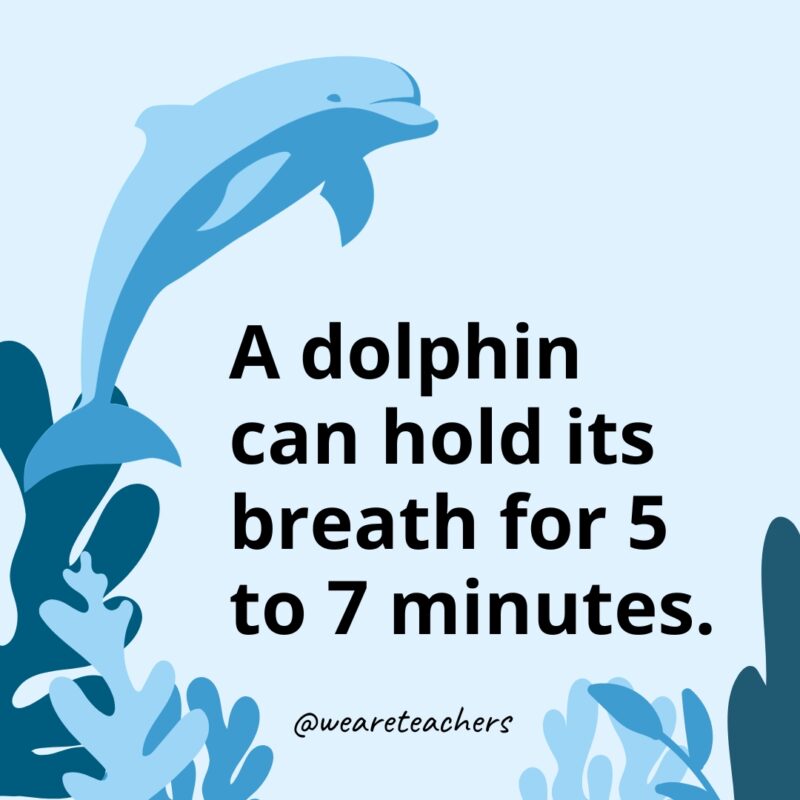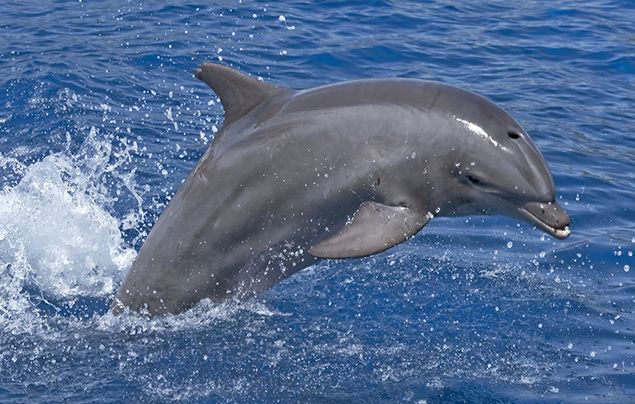Enjoyable and Educational Dolphin Facts for Children and Grownups Alike
Study the Sea: Fascinating Dolphin Realities for Sea Lovers
The world of dolphins provides a fascinating crossway of intelligence, social habits, and ecological significance. With around 37 varieties, these marine mammals display a series of impressive qualities that not only astound ocean fanatics yet likewise emphasize their vital role in aquatic environments. From their intricate interaction techniques to their excellent analytical abilities, dolphins challenge our understanding of pet intelligence. The pressing need for preservation efforts to shield these animals and their environments increases important inquiries regarding our obligation in the direction of the sea's inhabitants. What effects do these aspects hold for our communications with these remarkable beings?
Dolphin Variety Diversity
Variety is a trademark of the dolphin household, including a broad array of varieties that exhibit distinctive physical features, actions, and habitats. The family members Delphinidae, frequently referred to as oceanic dolphins, consists of approximately 37 species, each adapted to particular eco-friendly specific niches. The bottlenose dolphin (Tursiops truncatus) is renowned for its knowledge and convenience, prospering in both open and coastal ocean atmospheres.
On the other hand, the whale (Orcinus orca), often referred to as the killer whale, is the largest member of the dolphin household and is identified by its striking black-and-white pigmentation. Orcas demonstrate complex social structures and searching strategies, showcasing the behavioral variety within the family members. Various other varieties, such as the spinner dolphin (Stenella longirostris), are noted for their acrobatic screens and preference for warmer waters, highlighting the versatility of dolphins to numerous aquatic communities.
In addition, river dolphins, including the pink river dolphin (Inia geoffrensis), occupy freshwater settings, better illustrating the wide-ranging environments that dolphins occupy. Dolphin Facts. This incredible variety not only enhances marine communities yet likewise emphasizes the significance of conservation initiatives to secure these remarkable animals and their atmospheres
Social Actions and Interaction
The detailed social behavior and interaction approaches of dolphins are essential parts of their existence, assisting in group communication and boosting survival. These extremely smart marine mammals exhibit facility social structures, typically creating husks that can range from a few people to over a hundred. Within these teams, dolphins take part in habits such as participating hunting, social play, and shared protection, which cultivate solid bonds amongst participants.
Dolphins use a sophisticated variety of vocalizations, consisting of clicks, whistles, and body language, to convey details and reveal emotions. Their signature whistles serve as special identifiers, comparable to names, allowing people to call out to each other. This singing communication is complemented by non-verbal signals, such as leaping, slapping the water, and integrated swimming, which better enhances their interactions.

Distinct Feeding Behaviors
Special feeding practices define dolphins, showcasing their versatility and intelligence in various aquatic environments. These aquatic creatures are recognized for their varied diet regimens, which mainly include fish, squid, and shellfishes. Their hunting methods can vary considerably, often tailored to the particular target and environmental conditions.
One remarkable technique is cooperative searching, where dolphins function pop over to this site in groups to herd institutions of fish right into tight developments, making it less complicated for individuals to catch their dish. This social actions not just improves their feeding performance but also strengthens social bonds within the husk. In addition, dolphins have been observed utilizing a strategy called "fish-whacking," where they utilize their tails to stun or disorient fish, helping Continued with much easier capture.
Another remarkable feeding routine is echolocation, which allows dolphins to find target also in murky waters. Overall, the special feeding practices of dolphins highlight their function as proficient killers within the marine environment, showing both knowledge and resourcefulness.
Intelligence and Trouble Fixing
Dolphins exhibit amazing cognitive capabilities that prolong beyond their sophisticated feeding strategies. Their intelligence is evident in their analytic abilities, social communications, and ability for knowing. Research has demonstrated that dolphins can use devices, such as using aquatic sponges to shield their rostrums while foraging on the seafloor. This behavior highlights their capability to manipulate their environment properly and adapt approaches to enhance survival.
Moreover, dolphins display innovative communication skills, utilizing a complex system of clicks, whistles, and body movement. Dolphin Facts. This communication is important for coordinating group activities, such as hunting and socializing, highlighting their capability to function collectively in the direction of a typical goal. Their ability to comprehend abstract ideas, consisting of self-recognition in mirrors, additionally highlights their cognitive refinement
In regulated studies, dolphins have shown a capability to resolve puzzles and perform jobs that require both memory and crucial reasoning. These communications show not only knowledge but additionally a determination to involve with their setting in novel means. In general, the cognitive prowess of dolphins places them amongst one of the most smart varieties in the world, promoting a deeper recognition for their function in aquatic communities.
Preservation and Environmental Impact
Preservation efforts targeted at securing aquatic ecosystems are essential for preserving dolphin populations and their environments. Dolphins are very sensitive to ecological adjustments, and their survival is intricately connected to the health of oceanic ecological communities. Overfishing, contamination, and climate change pose substantial hazards to both dolphins and their atmospheres.
Overfishing interferes with the food chain, causing a Get the facts decrease in target varieties essential for dolphin survival. In addition, contaminants such as plastics and chemicals gather in aquatic environments, endangering dolphins via intake and bioaccumulation. Enhanced water temperature levels and ocean acidification, consequences of environment modification, additionally endanger the delicate balance of aquatic ecosystems, influencing dolphin breeding and migratory patterns.
By focusing on conservation initiatives, we can guarantee that future generations enjoy the charm and vigor of dolphins and the seas they populate. Protecting aquatic environments is not simply about conserving dolphins; it is about maintaining the elaborate internet of life that sustains us all.
Final Thought
Dolphins exhibit the complexity and richness of marine life via their varied species, elaborate social frameworks, and progressed cognitive abilities. Their one-of-a-kind feeding routines and interaction approaches even more highlight their adaptability and knowledge. As crucial elements of aquatic communities, dolphins emphasize the requirement of recurring conservation efforts to safeguard their environments. Safeguarding these impressive animals is necessary not only for their survival but also for preserving the health and equilibrium of ocean settings globally.
Other types, such as the rewriter dolphin (Stenella longirostris), are kept in mind for their acrobatic screens and choice for warmer waters, highlighting the flexibility of dolphins to numerous aquatic environments.
Overall, the unique feeding practices of dolphins highlight their function as skilled killers within the marine environment, demonstrating both knowledge and resourcefulness.
In general, the cognitive prowess of dolphins places them among the most intelligent species on the earth, cultivating a much deeper gratitude for their function in marine environments.
